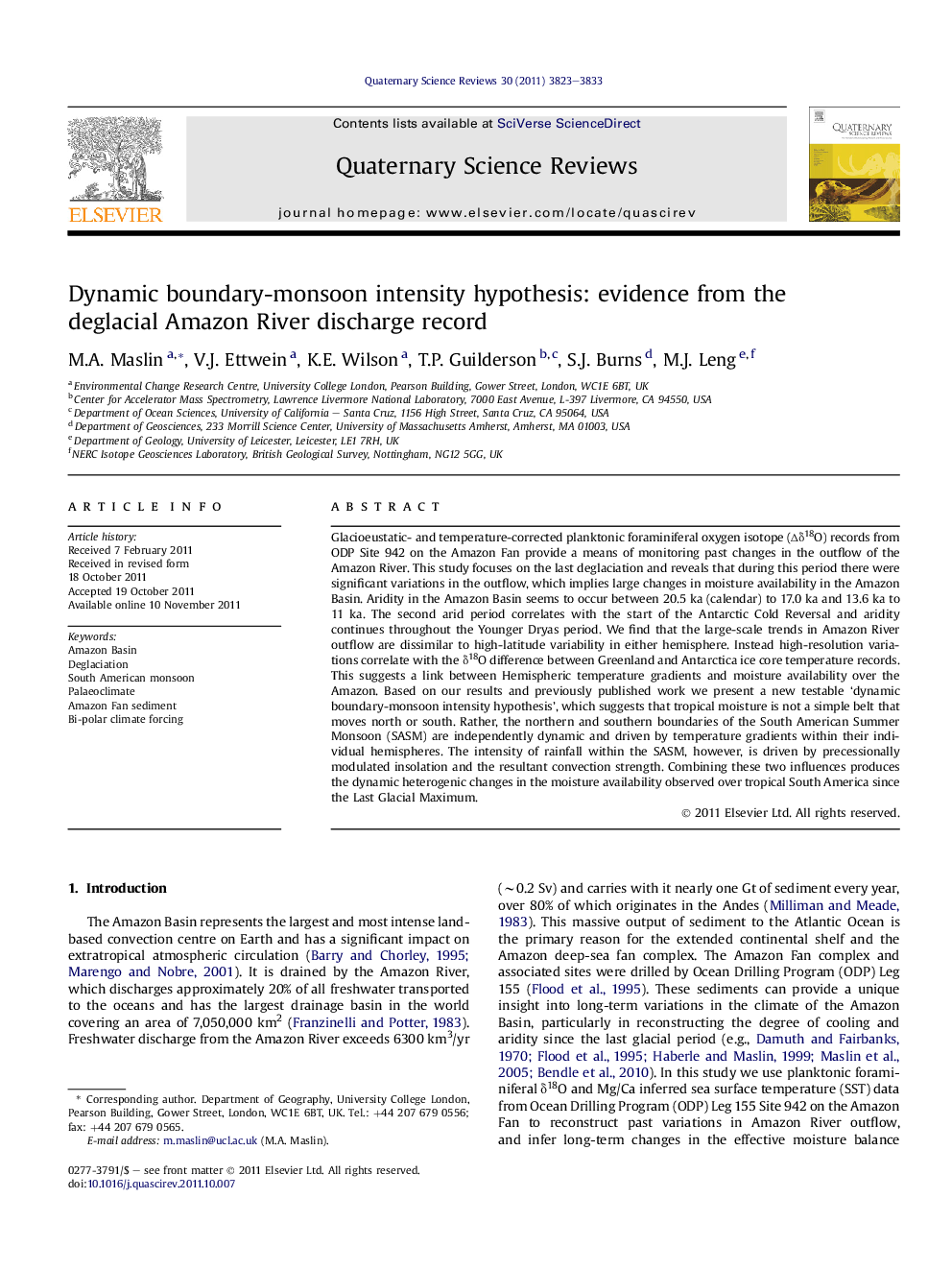| کد مقاله | کد نشریه | سال انتشار | مقاله انگلیسی | نسخه تمام متن |
|---|---|---|---|---|
| 4736566 | 1640904 | 2011 | 11 صفحه PDF | دانلود رایگان |

Glacioeustatic- and temperature-corrected planktonic foraminiferal oxygen isotope (∆δ18O) records from ODP Site 942 on the Amazon Fan provide a means of monitoring past changes in the outflow of the Amazon River. This study focuses on the last deglaciation and reveals that during this period there were significant variations in the outflow, which implies large changes in moisture availability in the Amazon Basin. Aridity in the Amazon Basin seems to occur between 20.5 ka (calendar) to 17.0 ka and 13.6 ka to 11 ka. The second arid period correlates with the start of the Antarctic Cold Reversal and aridity continues throughout the Younger Dryas period. We find that the large-scale trends in Amazon River outflow are dissimilar to high-latitude variability in either hemisphere. Instead high-resolution variations correlate with the δ18O difference between Greenland and Antarctica ice core temperature records. This suggests a link between Hemispheric temperature gradients and moisture availability over the Amazon. Based on our results and previously published work we present a new testable ‘dynamic boundary-monsoon intensity hypothesis’, which suggests that tropical moisture is not a simple belt that moves north or south. Rather, the northern and southern boundaries of the South American Summer Monsoon (SASM) are independently dynamic and driven by temperature gradients within their individual hemispheres. The intensity of rainfall within the SASM, however, is driven by precessionally modulated insolation and the resultant convection strength. Combining these two influences produces the dynamic heterogenic changes in the moisture availability observed over tropical South America since the Last Glacial Maximum.
► A new and unique record of the Amazon River outflow during deglaciation.
► Data resolution is between 50 and 5 years with an average of 25 years.
► We propose a novel testable ‘dynamic boundary-monsoon intensity hypothesis’.
► The northern and southern boundaries of the SAMS move independently.
► We provide a new re-envisioning of climate control on the ITCZ.
Journal: Quaternary Science Reviews - Volume 30, Issues 27–28, December 2011, Pages 3823–3833